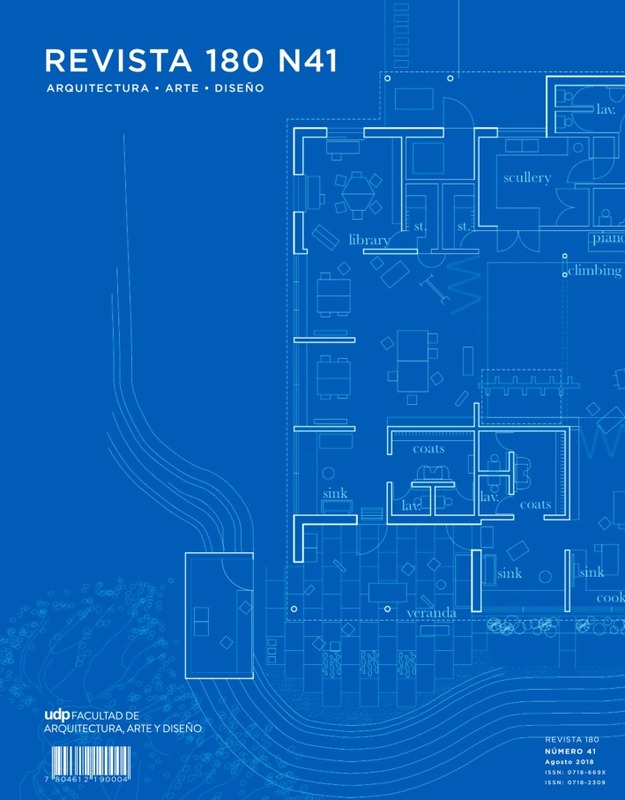JavaScript is disabled for your browser. Some features of this site may not work without it.
Buscar en RiuNet
Listar
Mi cuenta
Estadísticas
Ayuda RiuNet
Admin. UPV
La disolución del aula: Finmere Primary School (1958-59), un aprendizaje integrador, específico y activo
Mostrar el registro sencillo del ítem
Ficheros en el ítem
| dc.contributor.author | Lacomba-Montes, Paula
|
es_ES |
| dc.contributor.author | Campos-Uribe, Alejandro
|
es_ES |
| dc.date.accessioned | 2019-07-11T20:01:20Z | |
| dc.date.available | 2019-07-11T20:01:20Z | |
| dc.date.issued | 2018 | es_ES |
| dc.identifier.issn | 0718-2309 | es_ES |
| dc.identifier.uri | http://hdl.handle.net/10251/123498 | |
| dc.description.abstract | [EN] The present article describes Finmere Primary School (1958-59), by the architects David and Mary Medd, which belongs to the Development Projects in Great Britain. The methodology of the article responds to Herbert Read¿s theses in his book Education through Art (1943) and influential professionals, Christian Schiller and Robin Tanner, who together with the Medds, supported his theories about the importance of the Arts in the personal development of the individual. The article focuses on describing how the spaces of the school, and the school as a whole, lend themselves to the development of the theories raised by these thinkers, to analyze the validity of their approaches in the present. The description of the project strategies helps to understand the architectural space in relation to some theoretical concepts that understand the human being as creative in a community environment. In the first place, the school will be explained as a single learning space without classrooms, promoting learning that integrates several disciplines. Next, as a place that absorbs the simultaneity of activities, a built-in variety school designed for specific activities. Finally, the school will be interpreted as a workshop that facilitates learning through experimentation and forces students to participate actively, building their own working corners. The article is limited to the study of a school in the British territory, as a particular case that allows us to see, through its evolution, how the educational and architectural discipline could jointly make a significant advance in the post-war schools. Finmere Primary School¿s project adapts to the pedagogical concepts still in force today, so we can learn from it fundamental strategies for the design of educational spaces. | es_ES |
| dc.description.abstract | [ES] El artículo analiza la escuela de Finmere (1958-59) de los arquitectos David y Mary Medd, perteneciente a un grupo de proyectos conocidos como los Development Projects en el Reino Unido. La metodología del artículo atiende a las tesis de Herbert Read a través de su libro Educación por el arte (1943) y de profesionales influyentes como Christian Schiller y Robin Tanner que, junto con los Medd, apoyaban sus teorías acerca de la importancia del arte en el desarrollo personal del individuo. El artículo se centra en describir cómo los espacios de la escuela, y la escuela como conjunto, se prestan al desarrollo de las teorías planteadas por estos pensadores, para analizar la validez de sus planteamientos en la actualidad. La descripción de las estrategias proyectuales ayuda a comprender la forma del espacio arquitectónico basada en el ser humano como ser creativo en un ambiente comunitario. En primer lugar, se explica la escuela como un único espacio sin aulas, fomentando un aprendizaje que integra varias disciplinas. A continuación, como un lugar que absorbe la simultaneidad de actividades, una escuela hecha por partes (built-in variety), diseñada para actividades específicas. Por último, se interpreta la escuela como taller que facilita el aprendizaje a través de la experimentación y obliga a los alumnos a participar de forma activa, construyendo sus propios rincones de trabajo. El artículo se limita al estudio de una escuela en el territorio británico, como un caso particular que permite ver, a través de su evolución, cómo la disciplina educativa y la arquitectónica pudieron realizar conjuntamente un avance significativo en las escuelas de posguerra. El proyecto de Finmere se adapta a los conceptos pedagógicos vigentes aún, por lo que se puede aprender de ella estrategias fundamentales para el diseño de espacios educativos. | es_ES |
| dc.description.sponsorship | Los autores agradecen el apoyo del Ministerio de Educación, Cultura y Deporte, del Gobierno de España | es_ES |
| dc.language | Español | es_ES |
| dc.publisher | Facultad de Arquitectura, Arte y Diseño, Universidad Diego Portales | es_ES |
| dc.relation.ispartof | Revista 180. Arquitectura, arte, diseño | es_ES |
| dc.rights | Reserva de todos los derechos | es_ES |
| dc.subject | Active learning | es_ES |
| dc.subject | Development Projects | es_ES |
| dc.subject | Learning spaces | es_ES |
| dc.subject | Mary Medd | es_ES |
| dc.subject | Aprendizaje activo | es_ES |
| dc.subject | Espacios de aprendizaje | es_ES |
| dc.subject.classification | PROYECTOS ARQUITECTONICOS | es_ES |
| dc.title | La disolución del aula: Finmere Primary School (1958-59), un aprendizaje integrador, específico y activo | es_ES |
| dc.title.alternative | The dissolution of the classroom: Finmere Primary School (1958-59), an integrative, specific and active learning | es_ES |
| dc.type | Artículo | es_ES |
| dc.relation.projectID | info:eu-repo/grantAgreement/MECD//FPU15%2F00913/ES/FPU15%2F00913/ | es_ES |
| dc.relation.projectID | info:eu-repo/grantAgreement/GVA//ACIF%2F2015%2F008/ | es_ES |
| dc.rights.accessRights | Abierto | es_ES |
| dc.contributor.affiliation | Universitat Politècnica de València. Departamento de Proyectos Arquitectónicos - Departament de Projectes Arquitectònics | es_ES |
| dc.description.bibliographicCitation | Lacomba-Montes, P.; Campos-Uribe, A. (2018). La disolución del aula: Finmere Primary School (1958-59), un aprendizaje integrador, específico y activo. Revista 180. Arquitectura, arte, diseño. (41):1-13. http://hdl.handle.net/10251/123498 | es_ES |
| dc.description.accrualMethod | S | es_ES |
| dc.relation.publisherversion | http://www.revista180.udp.cl/index.php/revista180 | es_ES |
| dc.description.upvformatpinicio | 1 | es_ES |
| dc.description.upvformatpfin | 13 | es_ES |
| dc.type.version | info:eu-repo/semantics/publishedVersion | es_ES |
| dc.description.issue | 41 | es_ES |
| dc.relation.pasarela | S\367859 | es_ES |
| dc.contributor.funder | Generalitat Valenciana | es_ES |
| dc.contributor.funder | Ministerio de Educación, Cultura y Deporte | es_ES |






